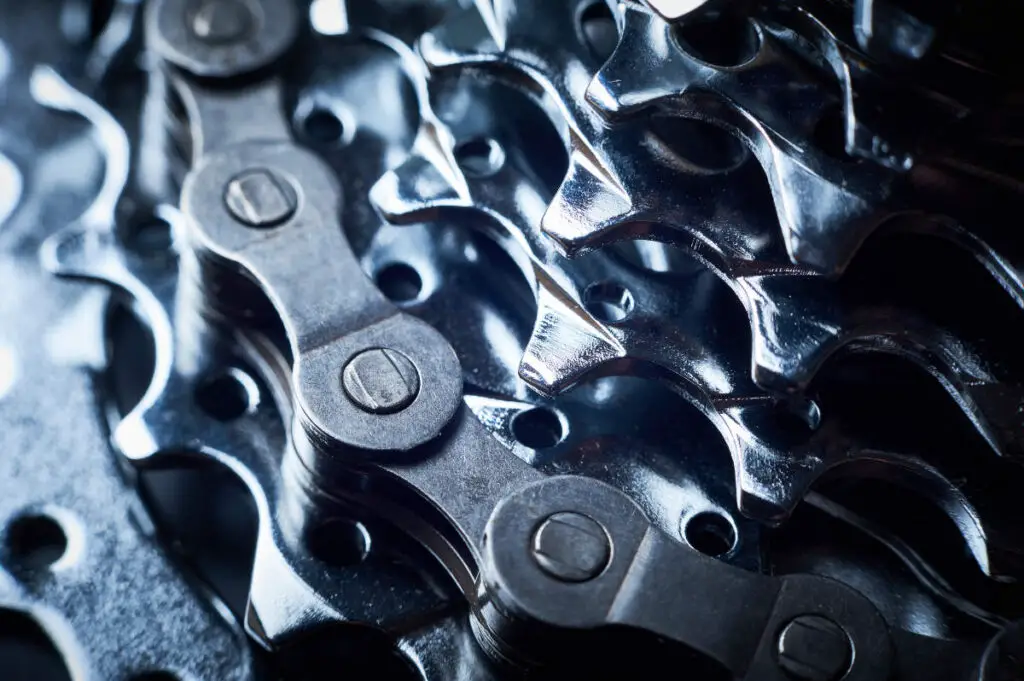Are you thinking of getting a road bike?
You’re not alone, millions of people are switching to them. They’re lighter and faster than regular bikes. But as a newbie, you’re probably wondering, do road bikes have gears?
Let’s find out.
Advertising links are marked with *. We receive a small commission on sales, nothing changes for you.
Do Road Bikes have Gears?

Yes, most road bikes have gears. The number of gears varies widely depending on the price, quality and intended use of the bike. The vast majority of road bikes have at least 21 gears.
Many offer 24 or even 30 gears, which gives riders more flexibility to tackle different terrain. The more expensive bikes also tend to have better-shifting systems that make it easier to change gears smoothly and accurately.
What is the Purpose of Road Bike Gears?
The purpose of road bike gears is to allow the rider to climb hills and accelerate quickly. When riding, you can change gears depending on your fitness level, terrain and speed.
Gears on a road bike allow you to keep up with other riders while going at your own pace. The more gears your bike has, the more options you have when it comes to climbing hills or sprinting up a long hill.
If your bike has too few gears, you may find yourself getting passed by other riders when you’re trying to ride at an even pace with them.
How many gears do road bicycles have?
The most common number of gears on a bicycle is 27. This is the number of gears found on most modern bicycles, including racing bikes and mountain bikes.
In addition, there are also touring bikes that have 26 gears. Road bikes are typically equipped with double cranksets (two chain rings), while mountain bikes usually have triple cranksets (three chain rings).
The number of gears refers to the number of different gear ratios available on a bicycle. A gear ratio measures how much force you need to apply to get the bike moving at a given speed, and vice versa.
How do you use gears on a road bike?
On a road bike, you use the shifters on the handlebars to change gears. Shifters are usually found right below the brake levers. Push the lever away from you to shift into a higher gear.
Pull the lever toward you to select a lower gear. The front derailleur shifts both chainrings at the same time, whereas the rear derailleur only shifts one chainring at a time.
How do you ride a road bike?
The first step to riding a road bike is getting on the bike. The easiest way to do this is to start from the less stable side (the left side of the bicycle).
If you are right-handed, put your left foot on the pedal closest to the rear wheel, and place your right foot on the ground at an angle under your left leg.
Bend your right knee so that it doesn’t stick straight out like a scarecrow’s arm. Now lift yourself onto the saddle by pushing off with your right foot and pulling up with both hands on either side of the handlebars.
Once you’re seated comfortably in place, you can begin pedaling to get going. Your knees should be slightly bent while pedaling; this will help prevent knee pain later if you continue riding long distances. To stop, simply squeeze both brakes at once — one-foot brake for each hand — which will bring you quickly to a halt!
Do you pedal while shifting gears?
You still have to be pedaling while you shift gears. It’s a slight change in technique, but it’s not hard to get used to. The main reason for having to pedal is so that your derailleur can move into the right position.
The derailleur is what moves the chain from one gear to the next — it’s like a tail on a kite that keeps the chain from getting stuck between gears.
When you shift, the derailleur moves over to make room for the next gear. If you aren’t pedaling when this happens, your chain will get stuck between gears, which is no fun at all!

Hi dear visitor! I’m Sebastian, a bike maniac who loves to spend a lot of time on two wheels in nature (I love white chocolate, so I absolutely need a calorie-burning balance that’s fun to boot ). Blogging is my second great passion. That’s why cyclinghalloffame.com regularly features new bike-related content.
Advertising links are marked with *. We receive a small commission on sales, nothing changes for you.
